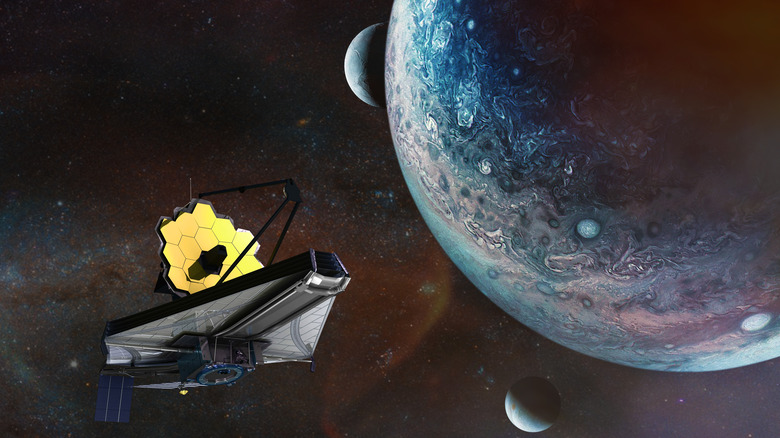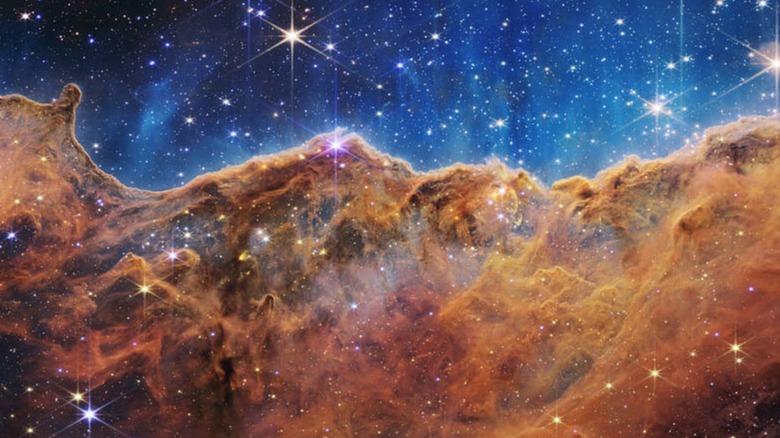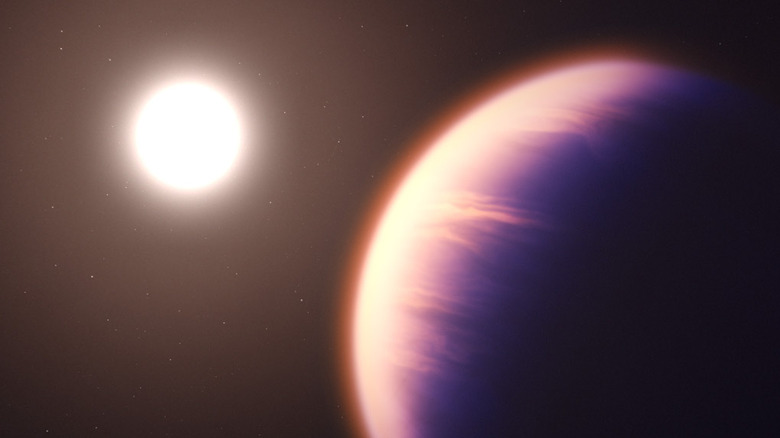James Webb Telescope Reveals This Alien Planet's Atmosphere Like We've Never Seen Before
The James Webb orbital infrared telescope continues to astonish Earthbound observers with the clearest, most detailed observations in the history of astronomy. As reported by the Max Planck Institute of Astronomy, Webb recently took observations of an exoplanet's atmosphere to an unprecedented degree of detail. The ability to look deeply into the composition of an alien planet's air promises new progress in our understanding of the universe and the search for extraterrestrial life.
This isn't Webb's first paradigm-shifting observation of a distant object. Per NASA, the JWST has taken extraordinary pictures of everything from a deep field of distant galaxies to an astonishing "landscape" of stars being born in the Carina Nebula, seen below.
As Webb continues to carry out its stated mission to study every phase of the history of our universe (via NASA) more exoplanet images will no doubt be forthcoming. The latest physical, chemical, and visual observations of a distant planet's atmosphere are just an early demonstration of what the JWST can do.
Peering into cosmic possibilities
The planet in question is WASP-32b, a "hot Jupiter" exoplanet (via NASA) 910 light years from Earth. Webb's observations go beyond simply having unprecedentedly clear pictures of an alien world. As the Planck Institute notes, the scientific instrument suite aboard the JWST has recorded data that break down the exact chemical makeup of the world's skies, along with the physical processes that created them.
NASA has a complete breakdown of Webb's discoveries about WASP-32b. The short version is that Webb was able to detect sulfur dioxide and abundant water vapor in the planet's atmosphere, byproducts of the impact of starlight from the WASP-32 system's large and energetic yellow sun. WASP-32b itself is about as massive as Saturn but orbits the star closer than Mercury, making direct exposure to starlight one of the most important engines of its physical and chemical processes. Webb was even able to detect that the world has a ring of sulfur dioxide not unlike Earth's ozone layer, actively interacting with high-energy photons from the WASP-32 star.
In 2020 WASP-32b was given the name "Viculus," while the WASP-32 star was christened "Parumleo." Both names were brainchildren of a student in Singapore taking part in the NameExoWorlds II Project (via Straits Times). For a long time that's all the WASP-32 system was – two names in the dark. Now, Webb has shone a vivid light on the previously poorly understood star and its planet, with future discoveries sure to follow.


